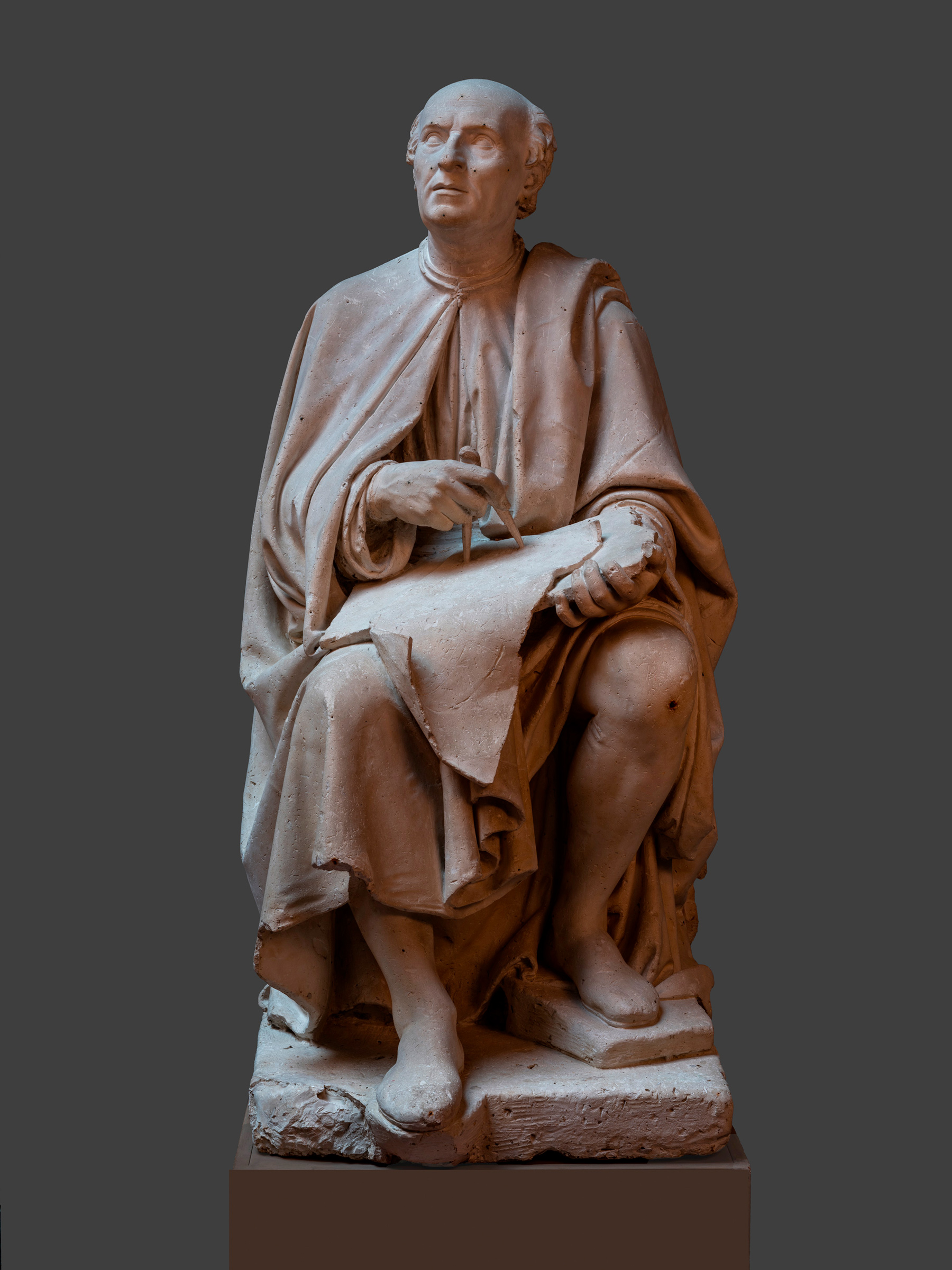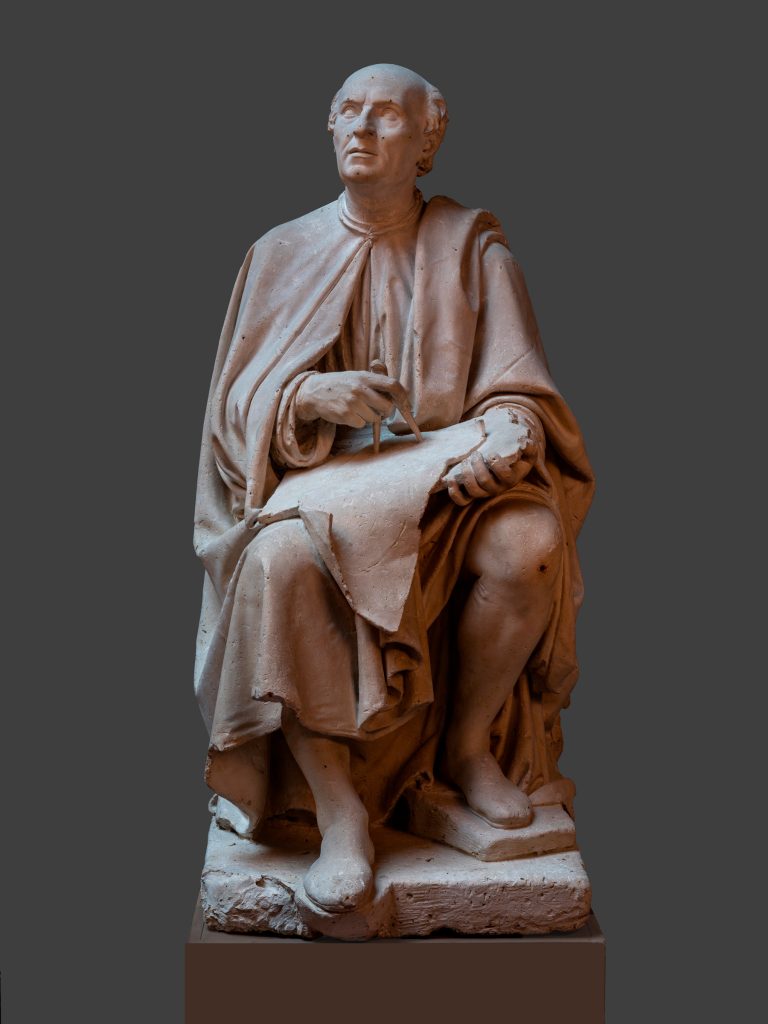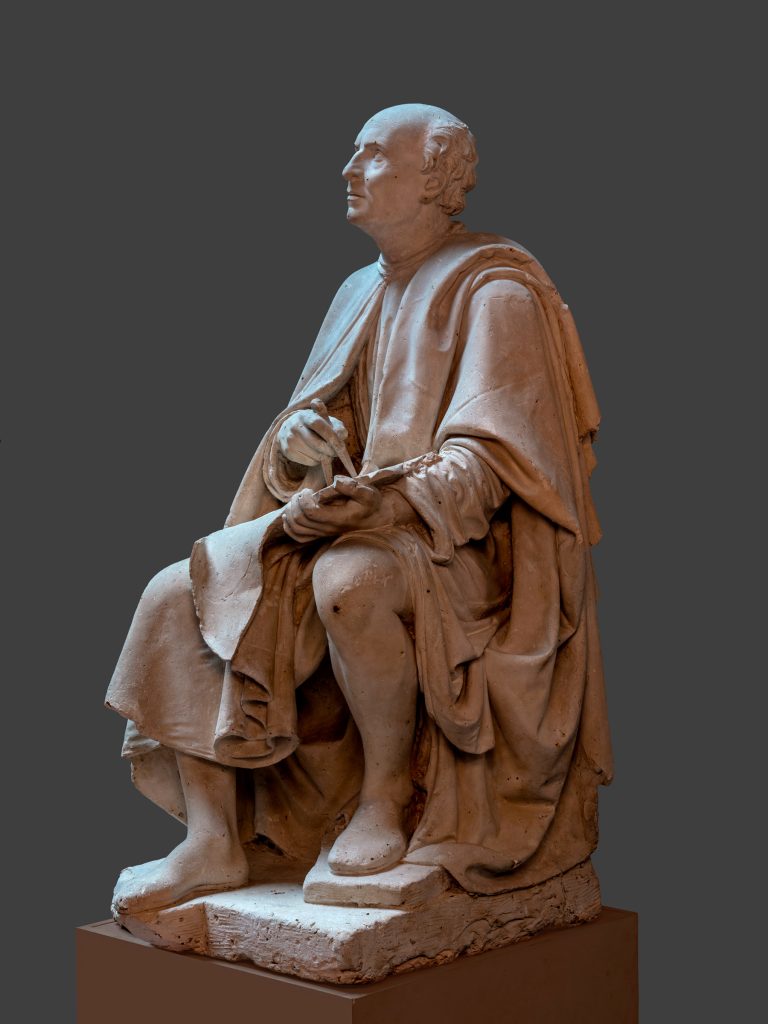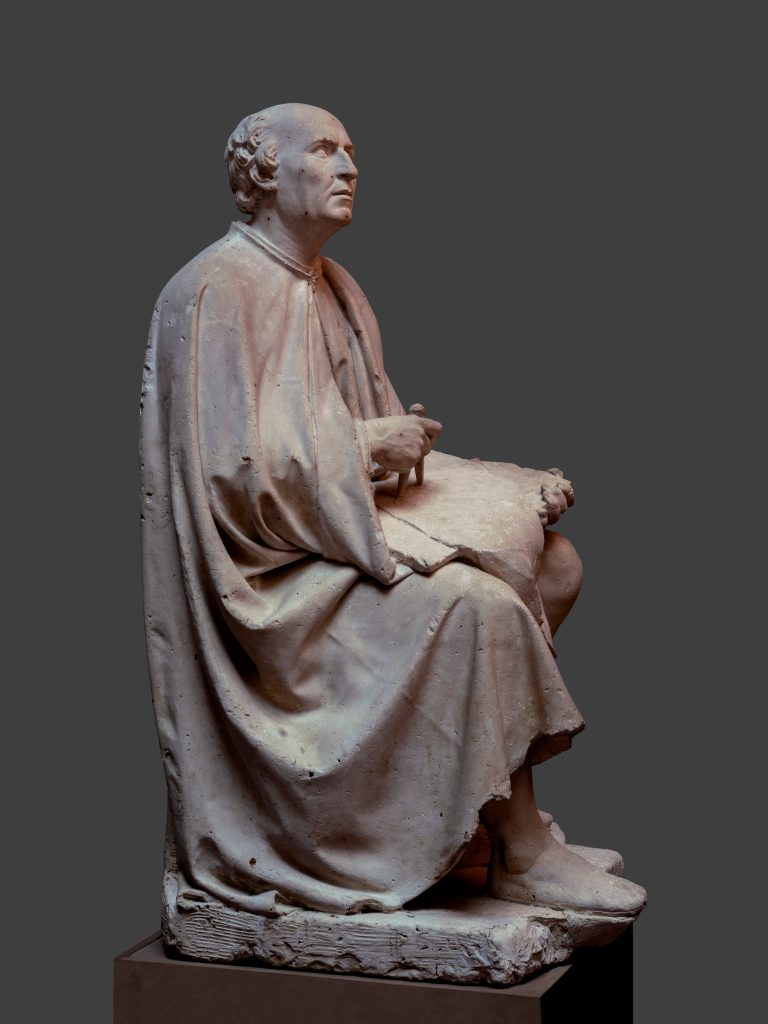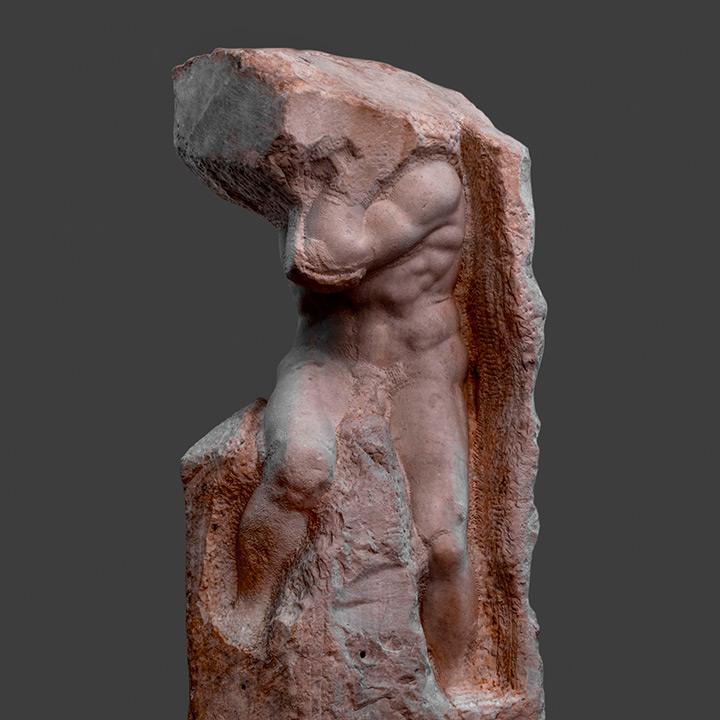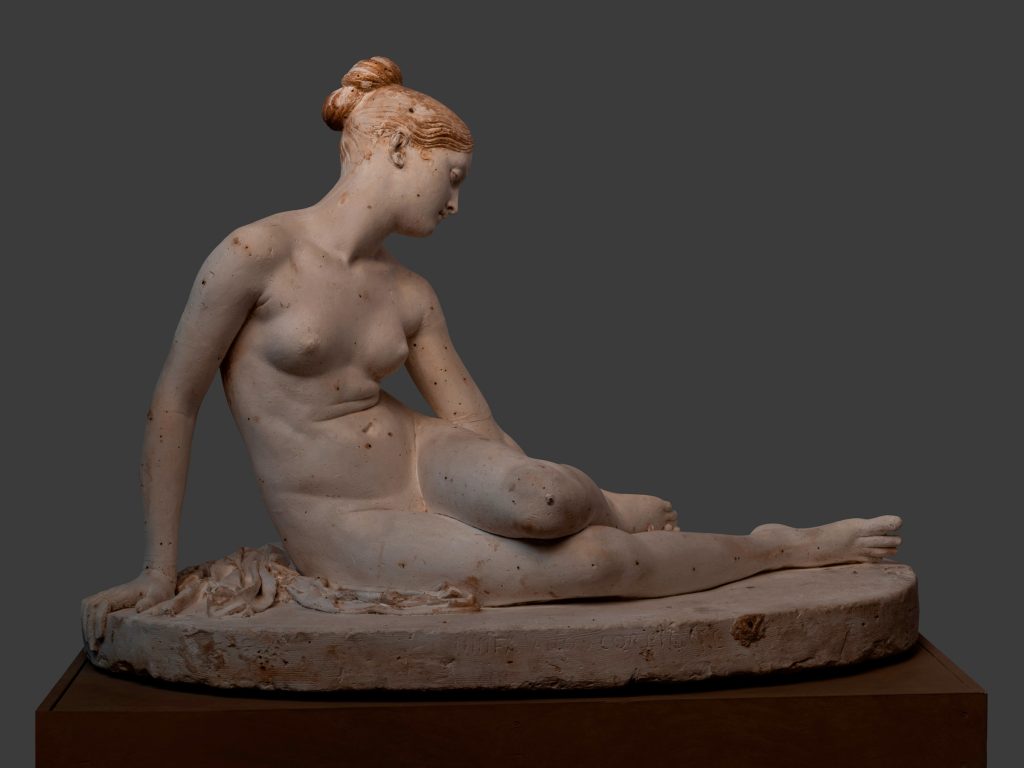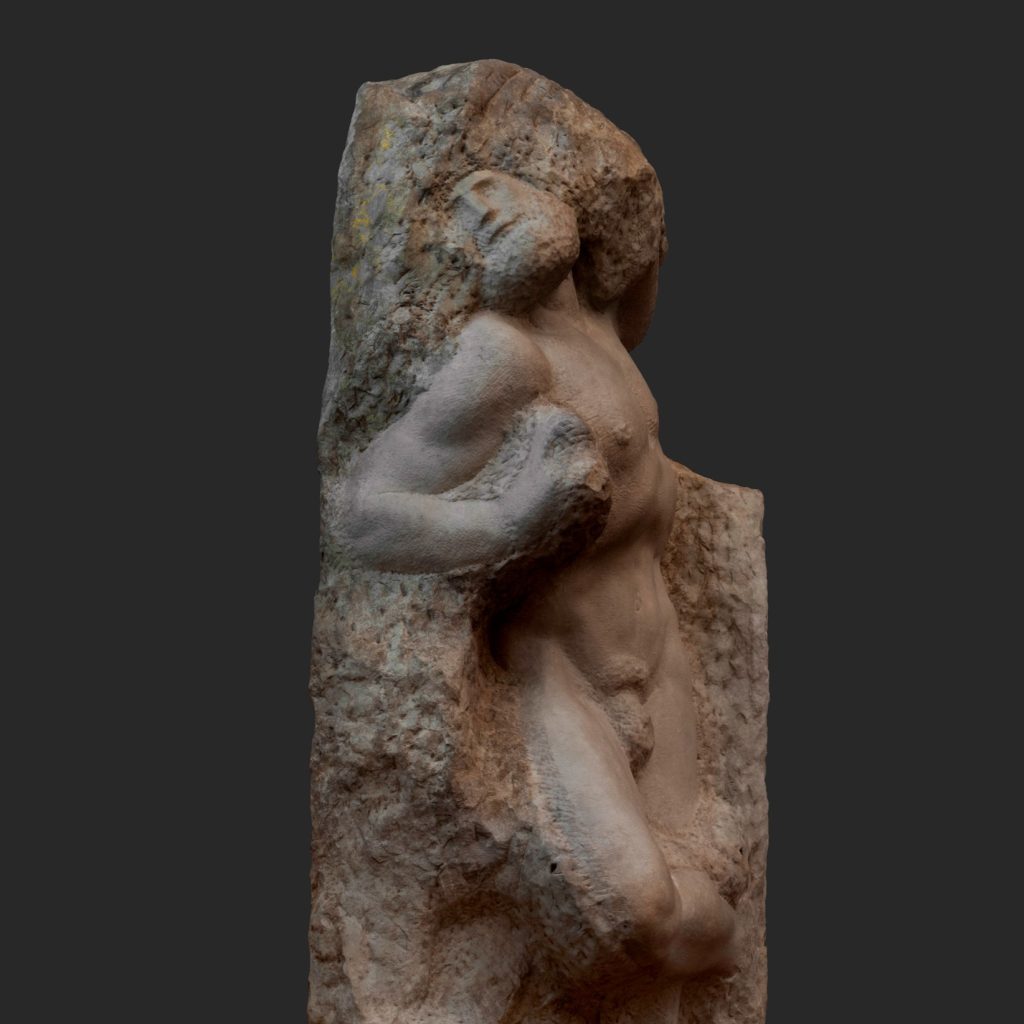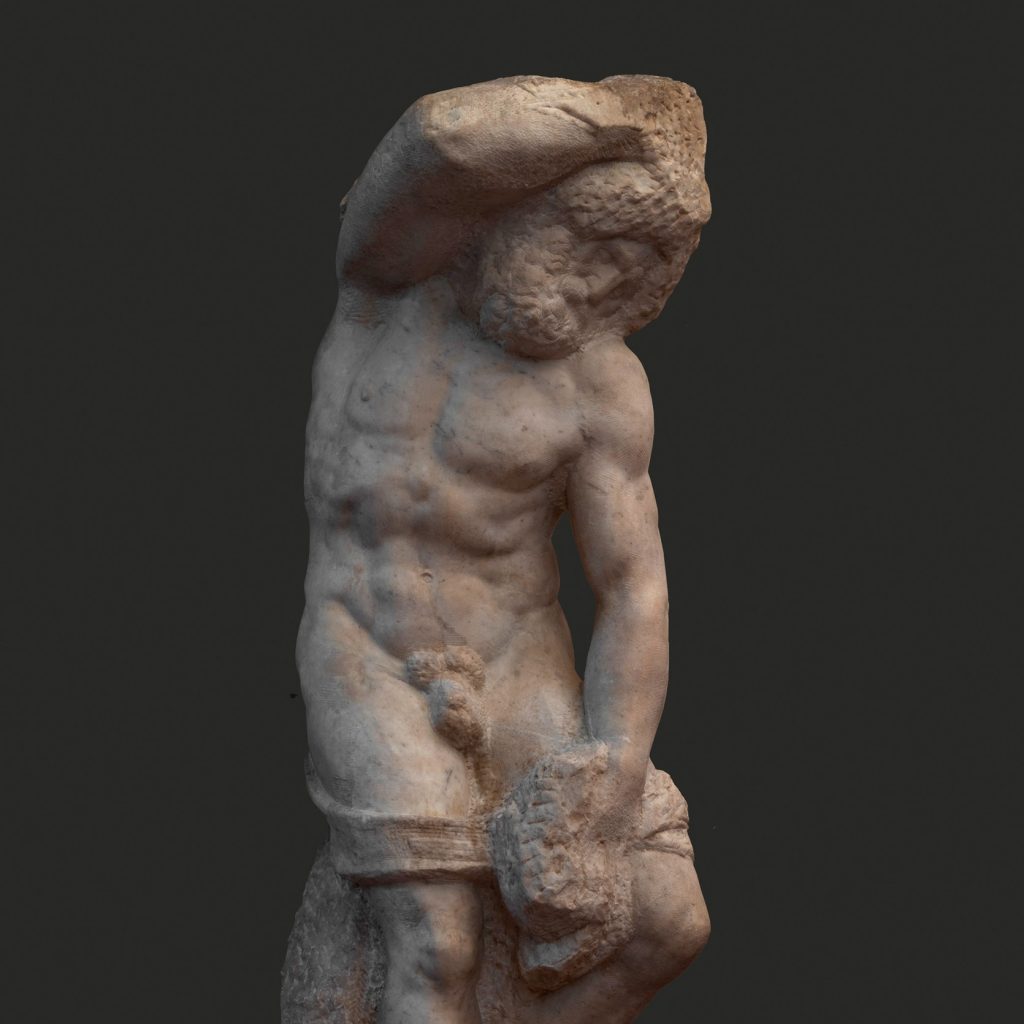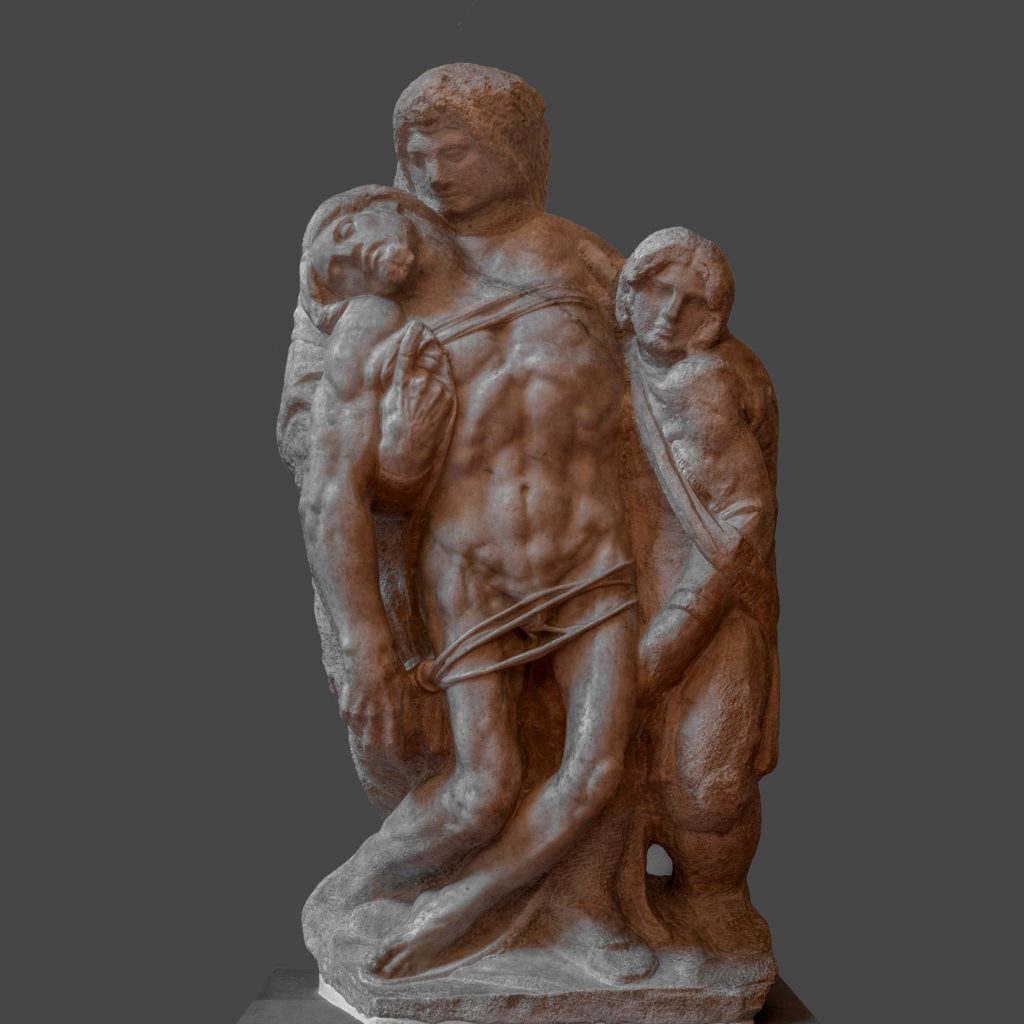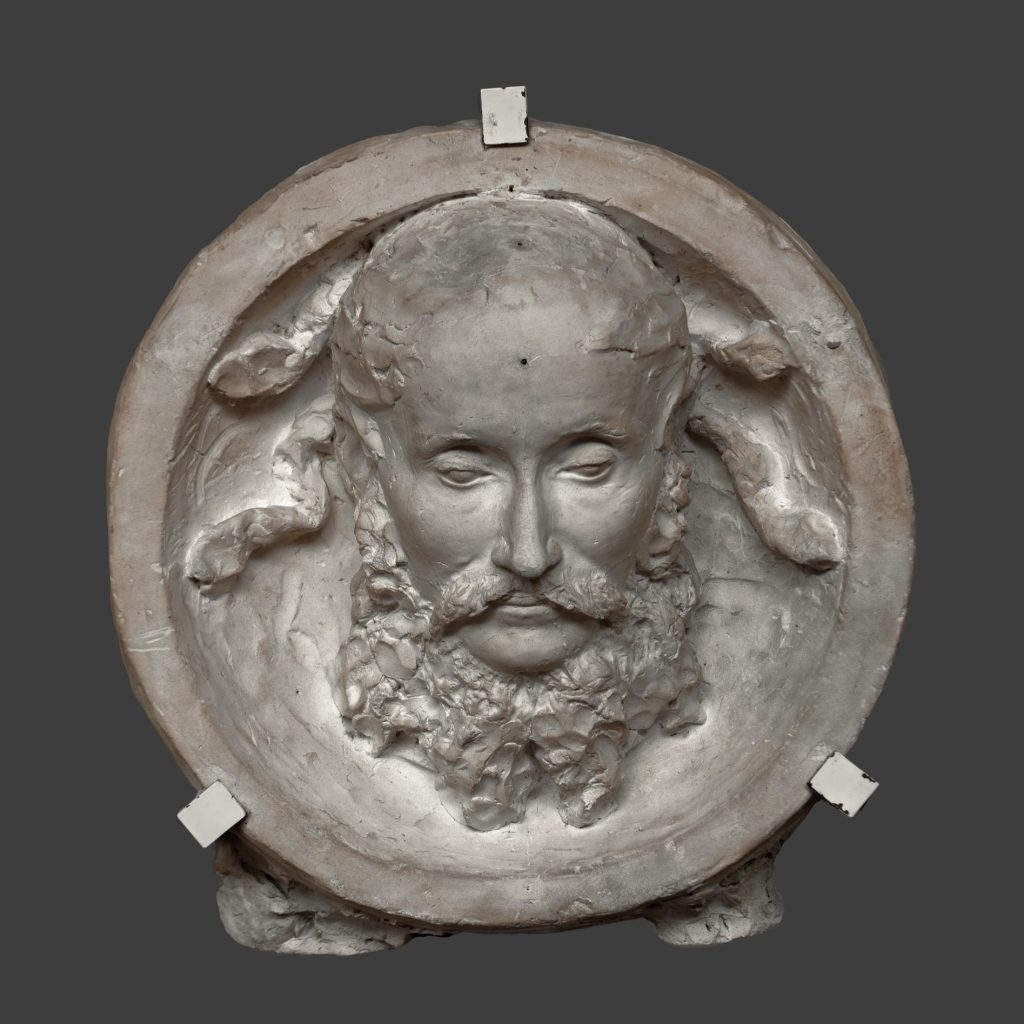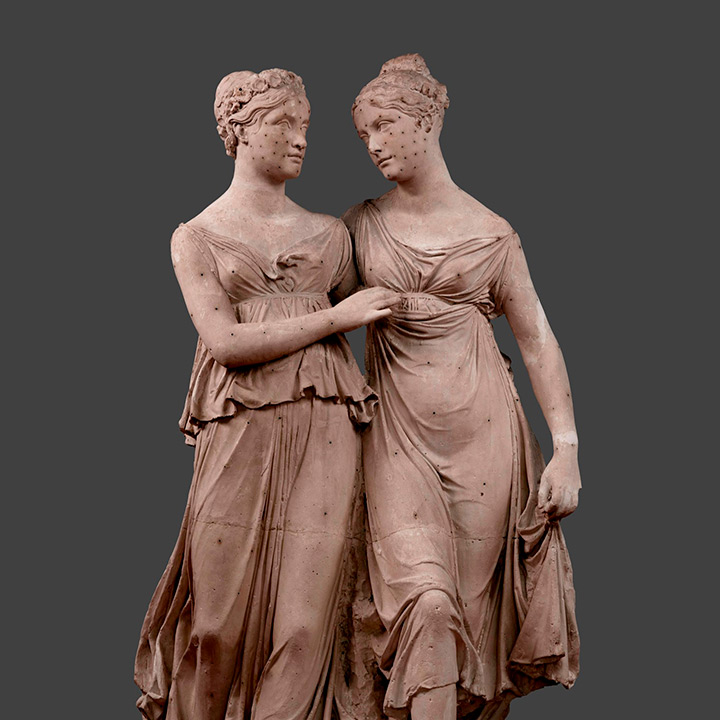Filippo Brunelleschi
Luigi Pampaloni
Florence, 1791 – 1847
SCULPTURE
Data sheet
- Author: Luigi Pampaloni
- Date: 1827
- Collection: SCULPTURE
- Technique: chalk model
- Dimensions: 130 x 70 x 79 cm
- Inventory: Inv. Scult. 1914 n. 1231
Image gallery
Artwork
The plaster is a preparatory model for one of the two sculptures placed in the niches at the sides of the entrance to the Palazzo dei Canonici, built between 1824 and 1826 on the south side of the Florence Cathedral, depicting the cathedral’s two leading architects: Arnolfo di Cambio and Filippo Brunelleschi. While Arnolfo’s statue (the model of which is also preserved at the Galleria dell’Accademia) portrays the artist observing the foundations of the church, Brunelleschi’s statue looks up as he ponders the design of the dome.
The two sculptures confirmed the success of their creator, Luigi Pampaloni, a pupil of Lorenzo Bartolini who became a professor at the Accademia di Belle Arti in Florence soon after. He was able to interpret two figures who were fundamental to the history of the country and Italian art at the height of the Romantic and Unification movements.
For Brunelleschi’s features, Pampaloni drew inspiration from the portrait that adorns the tomb of the great architect in the Florence Cathedral, a work by Buggiano, his disciple (1446-1448), while the decision to depict both artists seated was based on the model of the statues of Michelangelo’s Medici tombs in the New Sacristy of San Lorenzo (c. 1526 – 1534). The two sculptures became a model for the great statuary of the 19th century, which always preferred to depict men of genius in a seated pose.
The monuments to Arnolfo and Brunelleschi placed in a public street anticipate by a few years the monumental project for the statues in the Loggiato of the Uffizi, intended to celebrate the illustrious men of the country and in which Pampaloni himself would take part with the statue of Leonardo da Vinci.
